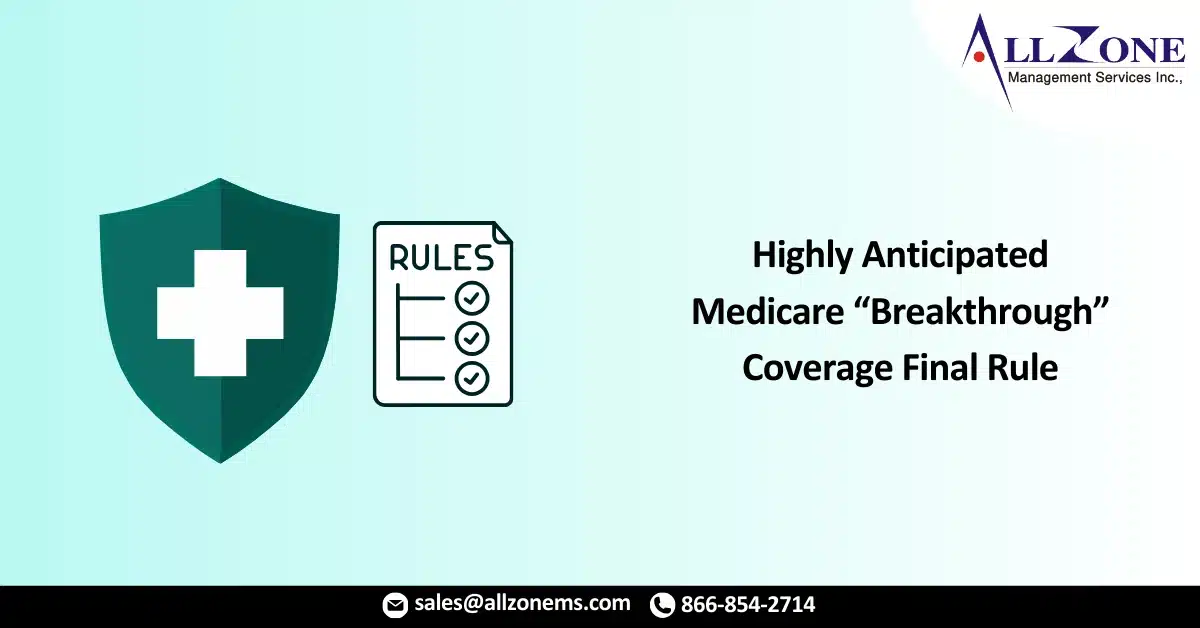The final rule also clarifies the definition of “reasonable and necessary.”
On Jan. 14, the Centers for Medicare & Medicaid Services (CMS) published a final rule creating a new Medicare coverage and reimbursement pathway for “breakthrough” medical devices. Durable medical equipment (DME) providers and long-term care facilities (LTCFs) and hospitals that render DME services, read on! Medical device “breakthroughs” are riding on the coattails of “breakthrough” vaccines getting fast-tracked for approval by the Food and Drug Administration (FDA). In a sea of low Medicare and Medicaid reimbursement rates, you could possibly financially gain with this new development.
Historically, national and local coverage determinations (NCDs and LCDs), which are not promulgated or passed into law, have struggled to keep pace with innovation in the medical device industry. Because no regulations have ever codified the definition of “reasonable and necessary,” medical device coverage determinations are typically left to the discretion of Medicare Administrative Contractors (MACs) tasked with applying NCDs and LCDs on an individual, case-by-case basis. Individual coverage determinations like these do not establish consistency nationwide. Even those devices previously designated by the FDA as “breakthrough” devices were coverable at the individual MAC’s discretion only. Modifying an NCD or LCD can take upwards of nine months to a year.
“Breakthrough” designation by the FDA is set forth under Section 3051 of the 21st Century Cures Act, which states that medical devices and device-led combination products must meet two criteria:
- The device must provide for more effective treatment or diagnosis of life-threatening or irreversibly debilitating human disease or conditions; and
- The device must satisfy one of the following elements:
-
- It represents a breakthrough technology;
- No approved or cleared alternatives exist;
- It offers significant advantages over existing approved or cleared alternatives, including additional considerations outlined in the statute; or
- Device availability is in the best interests of patients.
Under the Medicare Coverage of Innovative Technology (MCIT) pathway, the breakthrough device may only be used for the device’s FDA-approved or cleared indication(s), that is, the FDA “label” or “indication.” So-called “off-label” uses are not coverable through MCIT. That coverage will not exceed four years from the date of market authorization. Claims will not be retroactively payable prior to the effective date of the rule. This point – no retroactive payments – is imperative for providers to note.
The national Medicare coverage for a period of up to four years would begin immediately, upon the date the medical device received premarket approval (PMA): this is known as 510(k) clearance, or a de novo classification. In addition, the pathway only applies to medical devices that fit within statutorily defined benefit categories (e.g., surgical dressings), and the final rule explains that participating manufacturers should submit an NCD request during the third year of MCIT to allow for sufficient time for NCD development. Finally, CMS may terminate MCIT coverage if the FDA issues a medical device safety communication or warning letter, or if the FDA revokes market authorization for a device.
Finally, the final rule clarifies the definition of “reasonable and necessary.” The definition is taken from Chapter 13 of the Medicare Program Integrity Manual (PIM), which states that an item or service is considered “reasonable or necessary” if it is:
- Safe and effective;
- Not experimental or investigational; and
- Appropriate for Medicare patients, including the duration and frequency that is considered appropriate for the item or service in terms of whether it is:
- Furnished in accordance with the accepted standards of medical practice for the diagnosis or treatment of the patient’s condition or to improve the function of a malformed body member;
- Furnished in a setting appropriate to the patient’s medical needs and condition;
- Ordered and furnished by qualified personnel;
- One that meets, but does not exceed, the patient’s medical need; and
- At least is as beneficial as an existing and available medically appropriate alternative.
Although the final rule establishes a Medicare coverage pathway, it does not address coding or payment matters. Breakthrough device manufacturers must still obtain the appropriate code(s) for the device and obtain a reimbursement/payment level. Remember that CMS’s new final rule codifies “breakthrough” and “reasonable and necessary,” both of which create a bit more clarity for providers.
For More Information: https://www.racmonitor.com/cms-releases-highly-anticipated-medicare-breakthrough-coverage-final-rule

